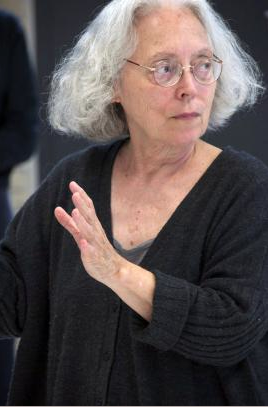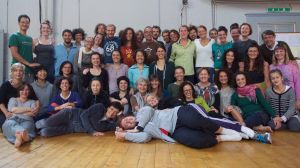Embodiment: It’s not what you think
I’ve been back in Tuscania, a week after the magical wedding, but this time alone, and for work. I did a five day intensive course, part of a much longer Body Mind Centering training in embodied anatomy (and if I’ve lost you there, hang on). Ontogenetic Development (the focus of the course I did) is the somatics of our earliest development from fertilization, through pregnancy, and the first year of life. The idea behind it, is that the development in the first year of life is a model for the whole of life, and though it might seem unlikely, that we can access these processes through anatomy, movement and touch. We are forty people in a converted cinema in Tuscania, an hour north of Rome. Amongst us there is a paediatrician, a pianist, a mechanical engineer, people who work with children in Montessori schools and special needs clinics, and lots of us from a dance / choreography / yoga background. Most of the group are Italians and Europeans, including two fabulous Irish women. There’s also a woman from New York, and two Korean artist choreographers. The group is so big and so varied, in part, because Bonnie is here. This is Bonnie Bainbridge Cohen, who developed Body Mind Centering over fifty years, and at 73, is a calm, twinkling and extraordinary teacher.

In the first few days, we study the anatomy of embryology, and work with the structures of these processes. We learn that the egg that formed us, was in our mother’s body when she was in her mother’s body, about the layering of the body, the movements of cells inward (our primitive streak!), about yolk sacs and amniotic fluid. Amidst a great deal of information, there are phrases that stay with me – only a few days after conception the cells know what they are by where they are. Location and community give us information about who we are; I know that – but I knew that when I was a bundle of cells (!)
Every day we have a baby visit, and one of the teachers plays / works with them. On the second day, we have a baby girl who had a stroke in utero. We’re astonished when we’re told this, and then when she comes, we can’t, first of all, see her injury. Bonnie follows the child’s lead, makes friends with her slowly, before the parents quietly retreat to the back of the group. For half an hour or so Bonnie plays with her, supporting the movements she’s already trying to do, and using a big soft make-up brush to stimulate the hand that’s affected by the stroke. She pushes a small red ball into the reluctant palm. It’s both moving and fun to watch such pleasurable games that open up touch – to see a lively conversation happening between a 70 year old and a baby.
At the end of our fourth day, I’m exhausted. Even though we have two hours for lunch it still feels like a long day – starting at 8.30am and going on until 6.30 or 7. After lunch, I’m on the floor, where I’m supposed to be working on the spirals present in the development of arms and legs, and integrating these into the movement patterns of babies between 7 & 12 months. I just want to sleep, and it feels like most of us feel the same. Thomas (one of our teachers, and also the man who married our friend Carla last week) always has fabulous music, he puts on something gentle & haunting, and we begin to work. Slowly, I find my way around the weariness of my limbs, and then Thomas asks us to find a partner. Beside me is Snjezana, the tall Croatian choreographer, with the mop of auburn curls. We begin, slowly, to work together. Somehow, despite our tiredness, we find a rhythm and follow it. I shift from reluctance and weariness, to slow enchantment. We slip into each other’s patterns, and the music holds us, – spirals coil like those tendrils from sweet peas, as we tangle and turn. For some reason, my hair is a bundle of curls today, so that not just our arms coil, but our hair too. The music changes gear and we turn again, this time with a twinkle in our movement. We shift weight and move from floor to standing, and lose a sense of peripheries, her gentle sturdy arms spiraling around mine. It’s just gorgeous to be dancing with this woman, to be so lost in spiraling. When the music stops and we are all done, I am all undone, and we grin at each other from underneath our messy curling hair . . .
Words don’t come easily to meet this practice of deep embodiment, but words are important. We are schooled in being willing not to know, and perhaps this is the deepest lesson of the week, and the most profound challenge to conventional knowledge. Embodiment: It’s not what you think.
